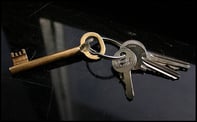Published on
Continuing Education Hits the Ice

I am a fan of ice hockey. The athleticism of the players, the speed of the game and the essence of the teamwork it takes to succeed are compelling to me. A successful hockey team, however, is not dissimilar from many other teams, inside or outside the sporting world.
Successful teams need to have a game plan, strong leadership, committed talent, effective coaching, and the ability to anticipate and respond quickly to what is taking place around you. The lessons from hockey provide some insights as to what it may take for continuing education units to succeed in the dynamic, market-driven (but university-controlled) landscape in which we play our game.
At its core, a CE unit needs to be agile and there are three main elements to achieving this. First, we need to be responsive to changing market conditions, but in order to be responsive we need to be attuned to the world around us, both internal and external to the institution. This is our playing surface. Second, we need to know the institutional drivers, the competitive environment and the economic, social, political and cultural factors that impact our work. Third, we need to have the leadership, skills and infrastructure to enable us to anticipate and react to the environment around us. These are our players. Like any successful team, there needs to be the right mix of skills—the leaders, the “special teams”—and the necessary breadth and depth to do the work. Just as in sports, our “owners” may not give us the resources we think we need but we nonetheless need to find ways to remain competitive.
Tying all of these elements together is the game plan—the general set of priorities and outcomes the team is seeking to achieve. An offensive thrust may enable a CE unit to capitalize on an emerging market opportunity or a new delivery technique. A defensive focus may enable you to work collaboratively with other faculties or departments rather than engaging in a competitive scenario. It may also ensure you are able to protect the resources you need in order to do the work you do.
Just as in hockey, an agile CE unit needs to be able to adapt to changing circumstances on the fly. You might be down a player, you might have your budget cut, you might have a bad game (or launch an unsuccessful program) or you might win a game you never thought you could (or receive funds for program development that was entirely unexpected). In any of these cases, a CE unit needs to be flexible, adaptable and ready to re-prioritize on a moment’s notice. You also need to be prepared to take risks.
Playing a safe, conservative game may be successful for a while but at some point a team needs a boost of new energy to move forward—you can’t be afraid to take the shot!
The constant change in the world of continuing education is what keeps our “game” interesting and rewarding. It requires planning but it also requires tremendous agility. Our game is not for those that strive for predictability or consistency. It’s kind of like the game of hockey.
Author Perspective: Administrator



